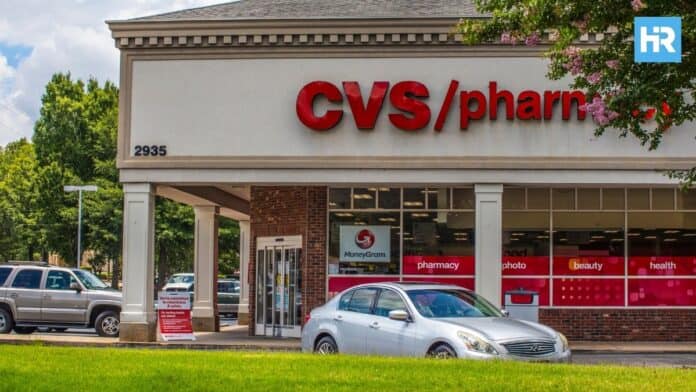If you’ve noticed a lot of “closed” signs on your local Walgreens, CVS, or Rite Aid lately, you’re not alone.
Over the past few years, these big chains have been shutting down stores left and right.
Recently, Walgreens announced they would close 1,200 stores over the next three years.
CVS is already in the middle of closing 900 stores, and Rite Aid? Well, they’ve been closing hundreds after filing for bankruptcy.
So, what’s happening?
It seems like just a few years ago, and you couldn’t drive down the street without seeing a shiny new Walgreens on every corner.
Now, these once-mighty pharmacy chains are shrinking.
Industry insiders like George Hill, an expert from Deutsche Bank, have seen this coming for a while.
As he said, “We have been watching this car crash in slow motion for years.”
But before you panic about where you’ll pick up your next prescription, let’s break down what’s really happening.
- Major pharmacy chains like Walgreens, CVS, and Rite Aid are closing stores due to lower profits, higher costs, and shifts in how people shop.
- Pharmacy Benefit Managers (PBMs) control drug prices, which makes it harder for pharmacies to make money.
- As more stores close, some communities could lose easy access to medications and healthcare services.
The Power of Pharmacy Benefit Managers (PBMs)
One of the biggest reasons for these store closures is the influence of Pharmacy Benefit Managers or PBMs.
PBMs are companies that work with insurance companies to negotiate the price of prescription drugs.
While they help lower costs for insurance companies and customers, they make it hard for pharmacies to earn enough money.
PBMs have been lowering drug prices for years, which is great for people buying medications but tough for pharmacies selling them.
Pharmacies like Walgreens and CVS are being paid less for their prescriptions, making it harder to cover their own costs, such as rent, employee salaries, and other expenses.
George Hill says PBMs “try to squeeze retail pharmacies on price,” and after more than a decade of this, pharmacies are struggling to stay open.
Too Many Pharmacies, Not Enough Customers
Another problem is that there are just too many pharmacies for the number of people who need them.
In the past, chains like Walgreens and CVS opened stores everywhere they could, thinking people would always come in for their healthcare needs.
But things have changed.
Nowadays, many people order their medications online or pick them up at larger stores like Walmart or Target while they do other shopping.
As a result, there isn’t as much need for so many standalone pharmacies.
George Hill explains that the industry “seemed to be growing footprints and locations faster than the need for pharmacies was growing.”
Simply put, there are more stores than customers, and that’s a big part of why so many locations are closing.
The Financial Struggles Behind the Closures
Walgreens, CVS, and Rite Aid are all facing rising costs, like rent and staff wages while making less money from prescriptions.
Walgreens recently said it plans to close 1,200 stores, focusing on locations that aren’t making enough profit or have leases ending soon.
Of the 8,500 stores Walgreens runs in the U.S., only around 6,000 are profitable.
Also, hundreds of CVS stores are closing, and Rite Aid is closing locations after filing for bankruptcy.
Walgreens CEO Tim Wentworth has said the company is confident that closing these stores will help the business in the long run, but it will take time for things to improve.
How Do These Closures Affect Communities?
With all these closures, many people are worried about how it will affect their neighborhoods.
In some areas, especially rural or underserved communities, pharmacies are the only places where people can get medications and healthcare services.
When these stores close, it can create a “pharmacy desert” where people don’t have a nearby place to fill their prescriptions.
Walgreens has said it will work with local leaders to minimize disruptions and ensure customers can still get the care they need.
However, some areas already feel the impact of these closures, and this is a real concern for those who rely on their neighborhood pharmacy.
There have even been protests from pharmacy workers blaming PBMs for creating conditions that force pharmacies to close.
And these workers are worried that their communities will suffer as more and more stores shut down.
What’s the Future of Neighborhood Pharmacies?
With so many stores closing, it’s easy to feel like pharmacies are going away for good.
But experts don’t think that’s the case.
They believe there’s still a future for pharmacies, but it might look slightly different than what we’re used to.
Neil Saunders, a retail industry expert, said pharmacies need to “rethink how they do business” and focus on what value they can bring to their customers.
In other words, they need to adapt to the times.
One idea is for pharmacies to offer more in-store healthcare services, like flu shots, blood pressure checks, or diabetes management.
CVS has already started adding healthcare clinics to some of its stores, where people can see a doctor or nurse without going to a separate clinic or hospital.
Pharmacies could also make changes to what they sell.
Walgreens, for example, is experimenting with selling more Walgreens-branded products and opening smaller stores that cost less to run.
But there’s no doubt they’ll need to get creative if they want to survive in a world where online shopping and big-box stores are making traditional pharmacies less relevant.
So, What Does This Mean for You?
With CVS, Rite Aid, and Walgreens closing stores, it may feel like the end of an era, but it doesn’t mean pharmacies are going away for good.
They are just going through changes as they adapt to new shopping habits, rising costs, and pressures from PBMs.
If your local pharmacy closes, it’s important to consider your options and find out where else you can get your prescriptions filled.
You might need to switch to another pharmacy or consider ordering medications online.
Pharmacies will still be around, but they will look and operate differently in the future.
In the meantime, it’s worth staying informed about how these changes might affect you and your community.
The pharmacy model is evolving, and we’ll all have to adjust along with it.






